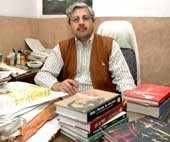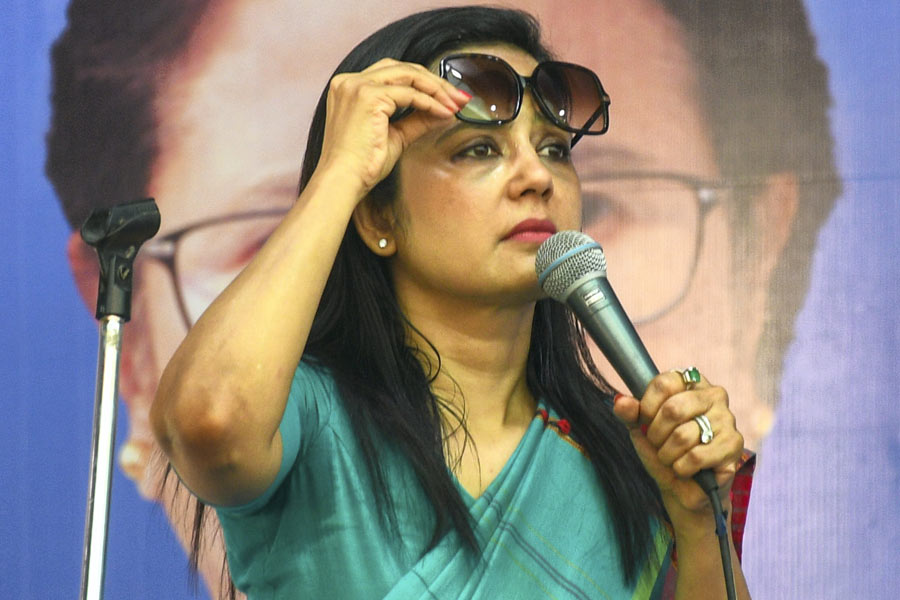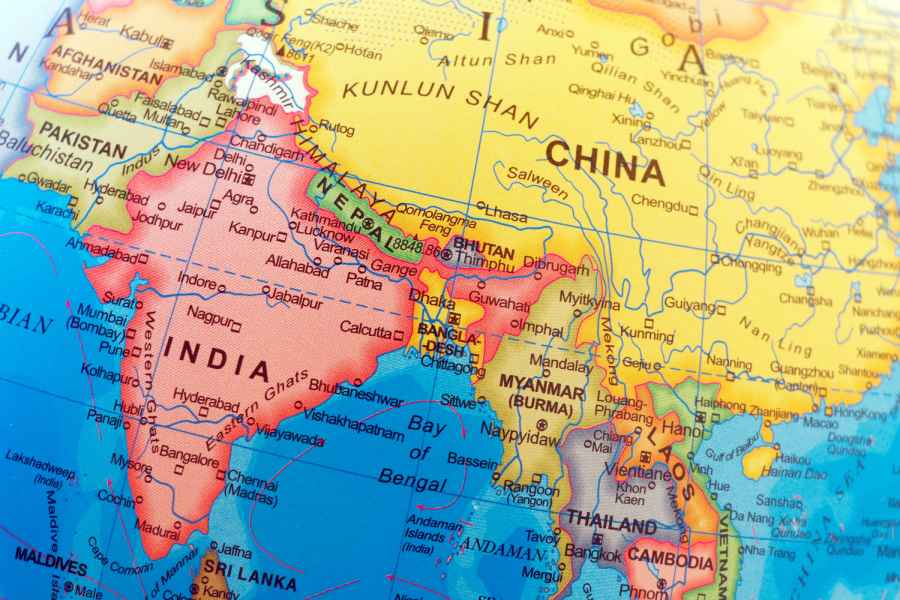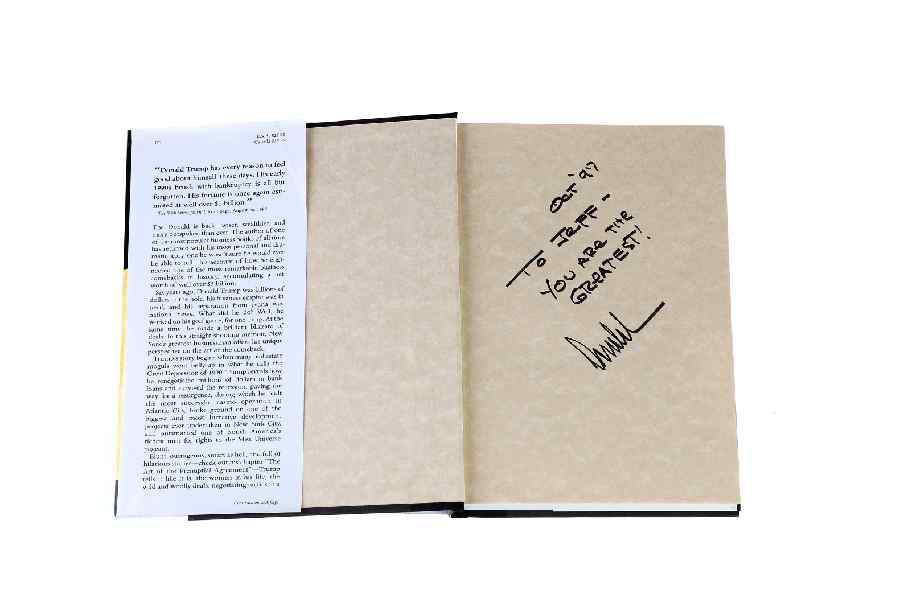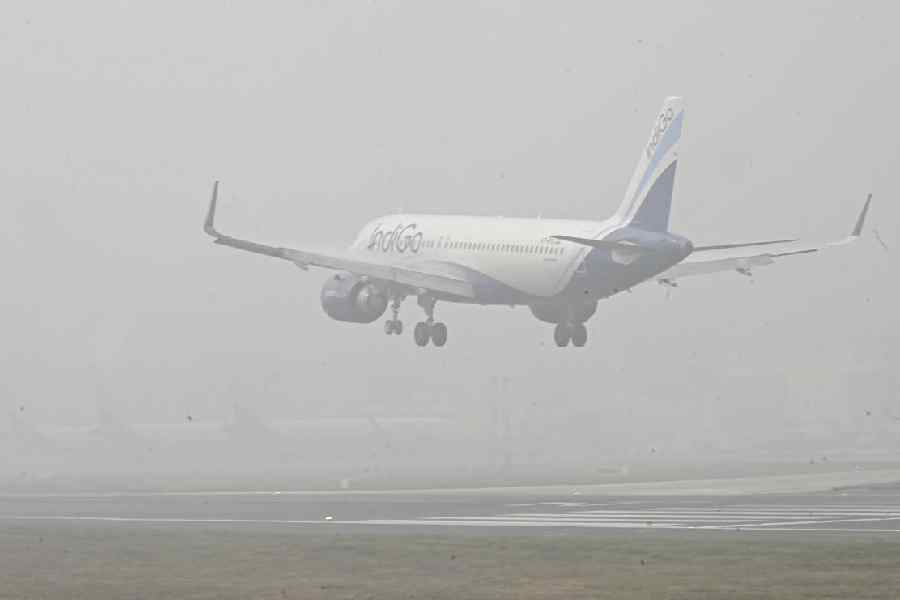 |
| COVER STORY: Ashok Maheshwari, managing director of Raj Kamal Prakashan — looking at new translations for a new Hindi readership photos: Prem Singh |
If you think Hindi publishing is all about Hanuman Chalisa, Gulshan Nanda or Jasoosi stories, think again. From Bulandshahr to Bhagalpur, from Jaipur to Jabbalpur, a new breed of Hindi readers is lapping up translations of Gabriel Garcia Marquez, Roberto Calasso, Brecht and Kafka. And a pack of Hindi publishers is catering to the growing demand.
Among the Hindi publishers investing in translations, Raj Kamal Prakashan is definitely a market leader but others like Radhakrishna Prakashan, Vani Prakashan in Delhi and Samvad in Mumbai are all strengthening the translation section of their lists. Even a little magazine called Tanav is publishing translations. Says Prayag Shukla, poet, writer and editor of National School of Drama’s Hindi theatre journal, “Raj Kamal has taken up translations as a project.” Observes poet and cultural activist Ashok Vajpeyi, “This new interest in translations is a return to an earlier phase. In the post-Independence decades of the Fifties and Sixties, there was a spurt in translations from the European classics and Gide, Chekhov, Dostoyevski got translated into Hindi.” According to Vajpeyi, the Hindi reader in independent India wanted to get to know the world. Then came the Seventies and Eighties when translations of Bengali authors dominated Hindi publishing. But now the tide is once again turning.
Says Ashok Maheshwari, managing director of Raj Kamal, a sixty-year old publishing house, “Our imprint has always focused on serious literature. But it is true that we are looking at translations in a new way. We are looking at new designs and new translations for a new readership.”
For one thing, Raj Kamal’s strategy now is not just to concentrate on important single authors but to publish a series of books from different literatures of the world. For instance, Raj Kamal is publishing for the first time a number of titles from Dutch literature. Similarly, publishing of Korean literature is also a first.
Confirming the increasing demand for translations, Maheshwari says, “Earlier one edition would take three to five years to go out of print. Now an edition may be reprinted twice in a year.” Notwithstanding the growing demand, Maheshwari says, “We are yet to exploit the potential readership of translations.”
The reasons for this surge in demand for translated titles are many. Shukla says, “It is a growing awareness of world literature.” Vajpeyi feels that education has contributed to new readers in the Hindi belt. “Living in a globalised world has also been an added input,” says Vajpeyi. There is more awareness of international literary trends. According to Vajpeyi, following Europe is a trend.
Sceptics in the publishing industry, however, argue that the spurt in translations is not only due to changing readership. Many of them say that foreign embassies are subsidising translations of their countries’ literature. Maheshwari counters such statements by saying that such subsidies are sporadic and limited.
The tastes of the readers have unquestionably changed. This has brought about some changes in the approach to translations. A key element is the language of the translations. Says Mahesh Dutt, advisor to the Raj Kamal translation programme, “Language is a key tool.” Dutt, who is translating the works of German writer Herman Hesse, says that the style of translation that appealed to a past generation need not necessarily excite contemporary readers. So one looks for a contemporaneity in language when commissioning translations. Adds Vajpeyi, “Good translation cannot be mechanical. It also means interpretation.”
Shukla makes an additional point, “A major new development has been that translators are translating directly from the original work, eliminating the agency of English language translations.” He mentions as examples Trinetra Joshi translating from Chinese and Vinita Sachidananda translating from Japanese. Shukla says that this practice had been there earlier as well. Vishnu Sahani had translated directly from Russian while Nirmal Varma had translated from Czech literature. Yet this trend of translating directly from the original is gaining strength.
Everyone agrees that the electronic media has contributed immensely to the growing reach of Hindi. “It has created a huge market,” observes Vajpeyi. It has certainly given a boost to readership.
But Vajpeyi has reservations about the electronic media contributing to a taste for language and literature. He says, “The language used by the electronic media is very superficial and without resonance. It is insensitive to the possibilities of language and subtleties tend to get lost.” Urvashi Butalia of the publishing imprint Zubaan also talks about the hybrid Hindi that is being propagated by the electronic media.
Other factors too have contributed to the changing tastes of the readership — living in a globalised world where the media bring news instantly of mega literary events and developments, thus sparking a curiosity in the reader. One must also take into account a growing search for identity among the young thinking India.
This definitely leads to a need to establish a context between the self and the world. And it is this need that is prompting Raj Kamal to devote 10 per cent of its list to translations of foreign classics and significant literary works. The percentage is expected to grow.

